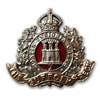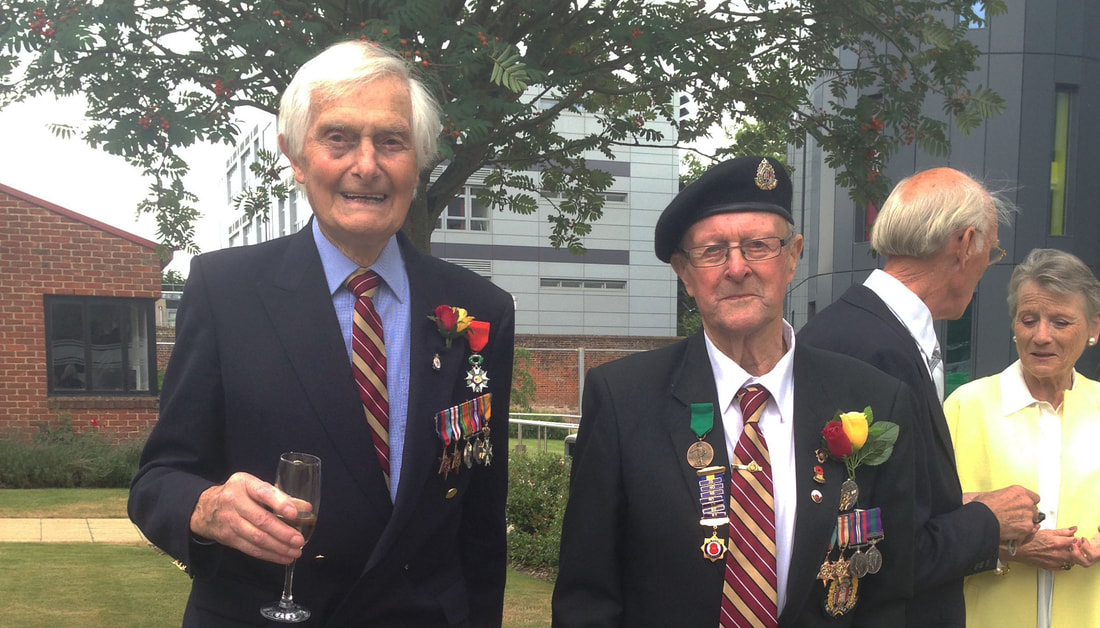2021 Friends News
2021 was a year much like 2020 - one of lockdowns, decreased activity and many an old Suffolk soldier leave us. On a positive note we did have Minden Day in August and many travelled far and wide to join us celebrate the Regiment's principal Battle Honour. News was naturally less than in previous years, but we did see another 'regimental' VC auctioned and we managed to recruit our youngest ever member. You can read all our news from that years below:
Compliments Of The Season
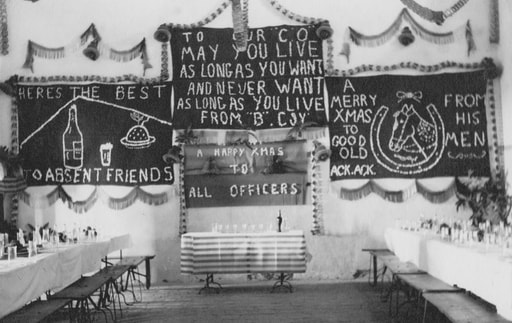
Wishing all Friends the compliments of the season for Christmas 2021.
Its been a funny old year, with a stop-start return to regimental affairs, but we've soldiered on through and look forward to things being a bit brighter in 2022.
Here's to all those surviving members of the 'Old Twelfth' and their families and we look forward to fourteenth year and the milestone the publication of our 40th magazine.
(Posted: 21/12/2021)
Its been a funny old year, with a stop-start return to regimental affairs, but we've soldiered on through and look forward to things being a bit brighter in 2022.
Here's to all those surviving members of the 'Old Twelfth' and their families and we look forward to fourteenth year and the milestone the publication of our 40th magazine.
(Posted: 21/12/2021)
Remembering Bill Price
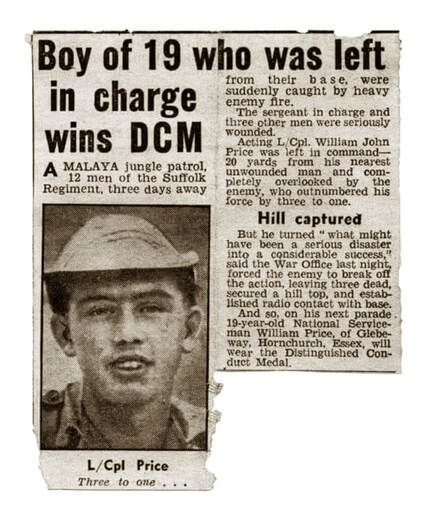
As the year draws to a close, we find ourselves reminded that seventy years ago this year, a young National Serviceman, Lance corporal Bill Price, won the last distinguished Conduct Medal awarded to a member of the Suffolk Regiment.
The action for which Bill Price won his D.C.M., took place at Bukit Tekala in Malaya in May 1951. On a routine patrol into the dense Malayan jungle, the twelve-man patrol came under fire from concealed communist bandits. After his Sergeant and a Corporal had been badly wounded by bandit fire, Lance Corporal Price assumed command and returned fire. During the firefight which lasted over an hour, Price ran between his wounded comrades checking that they were ok and gathering up all arms and equipment, less they fall into enemy hands, and with a defective wireless set, he set the operator back with the Sergeant's Compass to get help.
When the fire died down, Price gathered in the wounded and made a defensive perimeter against any possible future attack. Within an hour, the Signaller returned and the wounded were evacuated. The citation for his award noted that: “There is no doubt that the actions of L/Cpl Price were responsible for turning what might have been a serious disaster into a considerable success.” It was in every sense of the world an act of extreme gallantry, and one that was remembered with pride by man of the who knew Bill and who served in Malaya.
Later, the Friends were able with assistance from the Regimental Museum, were able to secure his medals at auction, which are now on permanent display.
(Posted: 15/12/2021)
The action for which Bill Price won his D.C.M., took place at Bukit Tekala in Malaya in May 1951. On a routine patrol into the dense Malayan jungle, the twelve-man patrol came under fire from concealed communist bandits. After his Sergeant and a Corporal had been badly wounded by bandit fire, Lance Corporal Price assumed command and returned fire. During the firefight which lasted over an hour, Price ran between his wounded comrades checking that they were ok and gathering up all arms and equipment, less they fall into enemy hands, and with a defective wireless set, he set the operator back with the Sergeant's Compass to get help.
When the fire died down, Price gathered in the wounded and made a defensive perimeter against any possible future attack. Within an hour, the Signaller returned and the wounded were evacuated. The citation for his award noted that: “There is no doubt that the actions of L/Cpl Price were responsible for turning what might have been a serious disaster into a considerable success.” It was in every sense of the world an act of extreme gallantry, and one that was remembered with pride by man of the who knew Bill and who served in Malaya.
Later, the Friends were able with assistance from the Regimental Museum, were able to secure his medals at auction, which are now on permanent display.
(Posted: 15/12/2021)
A Gorton Works Repair
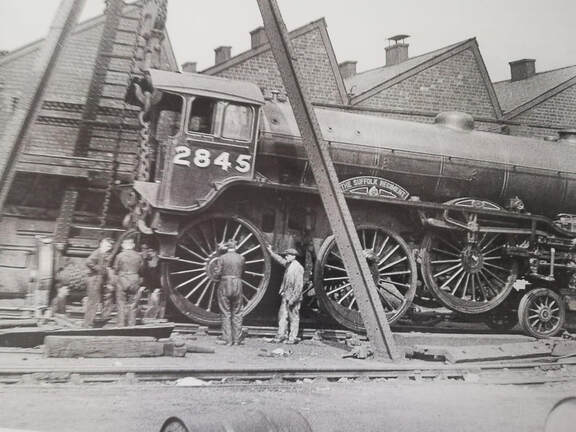
The photograph here, which turned up on Facebook recently, gives us a splendid view of the London and North Eastern Railway Company's locomotive No. 2845; "The Suffolk Regiment" while having an axle box repair at Manchester's Gorton 'Tank' works.
For those interested, it gives us a good view of the nameplate and the Regimental Badge that was mounted below it along each side of the boiler. One badge and nameplate survive in the Regimental Museum, whilst the other pair we believe, are in private collections. When it was launched, the boiler plate at the front, also had a Regimental Badge, but this it is believed, was made of wood and was only carried for the initial few weeks in June-July 1935 when the locomotive was commissioned.
The photo also gives us a good appreciation of the huge size of the 'Sandringham' Class of steam locomotives. These huge machines were used primarily pulling the 'Boat Trains' from either Harwich or Liverpool, and No. 2845 spent its early years mainly in the north, but in its later years, after its overhaul in 1952 when it was renumbered No. 61645, it came home to be used more regularly on the east coast lines, mainly from Ipswich and Great Yarmouth.
(Posted: 12/12/2021)
For those interested, it gives us a good view of the nameplate and the Regimental Badge that was mounted below it along each side of the boiler. One badge and nameplate survive in the Regimental Museum, whilst the other pair we believe, are in private collections. When it was launched, the boiler plate at the front, also had a Regimental Badge, but this it is believed, was made of wood and was only carried for the initial few weeks in June-July 1935 when the locomotive was commissioned.
The photo also gives us a good appreciation of the huge size of the 'Sandringham' Class of steam locomotives. These huge machines were used primarily pulling the 'Boat Trains' from either Harwich or Liverpool, and No. 2845 spent its early years mainly in the north, but in its later years, after its overhaul in 1952 when it was renumbered No. 61645, it came home to be used more regularly on the east coast lines, mainly from Ipswich and Great Yarmouth.
(Posted: 12/12/2021)
The Barracks Clock
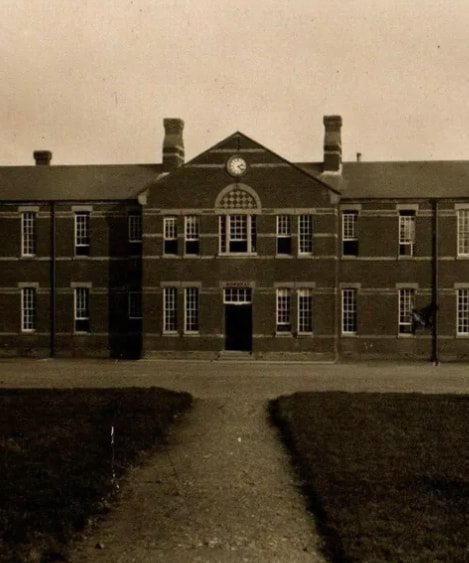
Many moons ago, we were informed that the clock that was once positioned above the front door of 'Mobray' Block at Gibraltar Barracks, was saved when the Depot site was demolished in the mid-1960s and that it was taken to Landguard Fort in Felixstowe, where it still remains.
'Mobray' Block, along with its sister block 'Meade' (which was situated behind it) were build as part of the new administrative Depot for the East Suffolk Regiment in 1878. The comprised of four long barrack rooms, two on each floor off a central staircase.
This photograph, was most probably taken just before the Great War, for after it, two captured German MGO8 machine guns on their carrying sledges sat either side of the doorway. The path in the centre of the picture, led through the grass to the edge of the officers tennis courts, from where it led onto the Officers Mess. Just behind the photographer was a crossroads of paths, with an intersecting one leading south to the Administration Block, and North to the training huts and Hospital.
If anyone is able to assist us in confirming whether the clock at Landguard Fort is indeed that which hung over 'Mowbray' Block, then please do let us know.
(Posted: 09/12/2021)
'Mobray' Block, along with its sister block 'Meade' (which was situated behind it) were build as part of the new administrative Depot for the East Suffolk Regiment in 1878. The comprised of four long barrack rooms, two on each floor off a central staircase.
This photograph, was most probably taken just before the Great War, for after it, two captured German MGO8 machine guns on their carrying sledges sat either side of the doorway. The path in the centre of the picture, led through the grass to the edge of the officers tennis courts, from where it led onto the Officers Mess. Just behind the photographer was a crossroads of paths, with an intersecting one leading south to the Administration Block, and North to the training huts and Hospital.
If anyone is able to assist us in confirming whether the clock at Landguard Fort is indeed that which hung over 'Mowbray' Block, then please do let us know.
(Posted: 09/12/2021)
Jubbulpore

This photograph recently turned up on a Facebook page with a request for help. It's a splendid shot of a group of men of 1st Suffolk taken most probably at Jubbulpore, India in 1920-21.
Dressed in khaki drill, they most men sport medal ribbons of service in the Great War and the man third left; a member of the South Wales Borderers, wears a soft service dress cap, the style of which was introduce din late 1916. Brass castle collar badges have started to creep back into us, but the khaki serge FS caps are unusual. The patterns of hobnails in the boots seem to be all different, contrary to the common rumour that at that time, all soldiers wore 13 studs, but does the man second left, have hole sin both his boots?
(Posted: 01/12/2021)
Dressed in khaki drill, they most men sport medal ribbons of service in the Great War and the man third left; a member of the South Wales Borderers, wears a soft service dress cap, the style of which was introduce din late 1916. Brass castle collar badges have started to creep back into us, but the khaki serge FS caps are unusual. The patterns of hobnails in the boots seem to be all different, contrary to the common rumour that at that time, all soldiers wore 13 studs, but does the man second left, have hole sin both his boots?
(Posted: 01/12/2021)
Friend Martin Bell...on Pointless

Good to see Friend Martin Bell on the television last night (though not watching much telly myself, I suspect that this is a repeat of an old episode) but great to see the tie of the 'Old Dozen' on show.
On being called to the living room by ones wife with the statement "he's wearing your awful tie!" there could only be one man in public who actively wears such a tie and that is Martin Bell. Its now a rare animal, so well done Martin for wearing it!
It would be a shame for its wear to rescind, so maybe a few more Friends could start wearing one. I wear one most weeks at work (even my back to front one on special occasions!!!)
(Posted: 22/11/2021)
On being called to the living room by ones wife with the statement "he's wearing your awful tie!" there could only be one man in public who actively wears such a tie and that is Martin Bell. Its now a rare animal, so well done Martin for wearing it!
It would be a shame for its wear to rescind, so maybe a few more Friends could start wearing one. I wear one most weeks at work (even my back to front one on special occasions!!!)
(Posted: 22/11/2021)
Remember
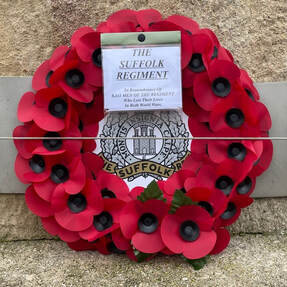
Remembering all those, who since the raising of the Regiment in 1685, have in many lands, given their lives for their country.
Lest We Forget.
(Posted: 11/11/2021)
Lest We Forget.
(Posted: 11/11/2021)
...And Another...
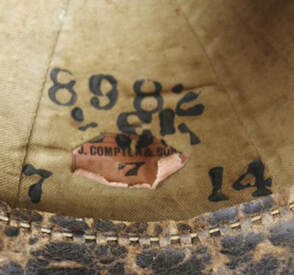
Some years back, we brought you the news of two Suffolk Regiment spiked Home Service Helmets that had been sold off by a military band, and now another had appeared for sale.
This example, just like the other two is stamped to 2nd Suffolk and is dated July 1914 - the eve of the Great War. Its original owner No. 8982, was Private Edward A. Brown, who proceeded to France in January 1915 whilst serving with the 1st Battalion, before being discharged in June 1919.
His Medal Index Card gives some comments as to his medals being forfeited, then being reinvested, so there must be an intriguing story here. It would be great to know more so if you are the successful new owner of his helmet - so please do get in contact.
(Posted: 02/11/2021)
This example, just like the other two is stamped to 2nd Suffolk and is dated July 1914 - the eve of the Great War. Its original owner No. 8982, was Private Edward A. Brown, who proceeded to France in January 1915 whilst serving with the 1st Battalion, before being discharged in June 1919.
His Medal Index Card gives some comments as to his medals being forfeited, then being reinvested, so there must be an intriguing story here. It would be great to know more so if you are the successful new owner of his helmet - so please do get in contact.
(Posted: 02/11/2021)
A 'Rose For Minden Day' Poster
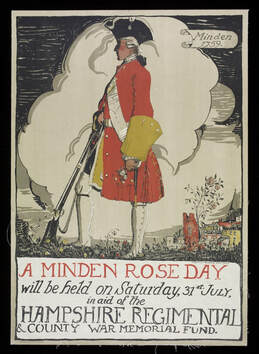
Whilst searching the internet for something completely different, we can across this rather superb poster form the early 1920s advertising Minden Day by one of fellow 'Minden' Regiment: The Royal Hampshire Regiment.
In the collection of the Victoria and Albert Museum, the original seems to have been painted by the artist 'G. Lovat Fraser' an artist famous for his illustrations in children's books and travel guides, and depicts a soldier of the 37th Regiment of Foot (as the Royal Hampshire's were at that time) standing amid the roses during the battle. The traditional yellow facings were restored to the Regiment in 1904 - just like the Suffolk Regiment a few years earlier, following the Childers Reforms of the British Army in the 1880s.
What a pity that such a poster does not survive (to the best of our knowledge) for the Suffolk Regiment...
(Posted: 28/10/2021)
(Image courtesy of the V&A Museum)
In the collection of the Victoria and Albert Museum, the original seems to have been painted by the artist 'G. Lovat Fraser' an artist famous for his illustrations in children's books and travel guides, and depicts a soldier of the 37th Regiment of Foot (as the Royal Hampshire's were at that time) standing amid the roses during the battle. The traditional yellow facings were restored to the Regiment in 1904 - just like the Suffolk Regiment a few years earlier, following the Childers Reforms of the British Army in the 1880s.
What a pity that such a poster does not survive (to the best of our knowledge) for the Suffolk Regiment...
(Posted: 28/10/2021)
(Image courtesy of the V&A Museum)
Another One For The Library...But Still A Few More To Find
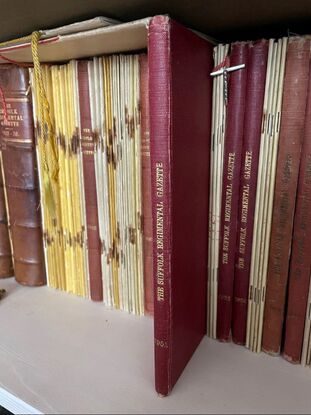
Today we were chuffed to add a bound copy of the 1951 Suffolk Regimental Gazette to the Friends Regimental Library.
With this volume now added to our bookshelf, this only now leaves us just 51 editions still to find of the 526 editions that were published between 1890 and 1959. Some editions required are going to be tough to obtain, particularly some of the very early numbers that we require, but we don't mind procuring a complete bound year if it has the edition inside that we are looking for.
So far, we're are missing a few early numbers from 1890 to 1894 (No.'s 5, 8, 15, 16, 23, 26, 35 and 53), and the complete years 1897, 1900 and 1901. We also need two volumes from 1914 (276-277) and four editions form 1916 (279, 281-284).
If any of you know where we could obtain these, we'd be very interested in hearing from you and its work mentioning that we have a shedful of spares to swap, so if you're missing one, do get in contact with us as we may have a spare!
(Posted: 15/10/2021)
With this volume now added to our bookshelf, this only now leaves us just 51 editions still to find of the 526 editions that were published between 1890 and 1959. Some editions required are going to be tough to obtain, particularly some of the very early numbers that we require, but we don't mind procuring a complete bound year if it has the edition inside that we are looking for.
So far, we're are missing a few early numbers from 1890 to 1894 (No.'s 5, 8, 15, 16, 23, 26, 35 and 53), and the complete years 1897, 1900 and 1901. We also need two volumes from 1914 (276-277) and four editions form 1916 (279, 281-284).
If any of you know where we could obtain these, we'd be very interested in hearing from you and its work mentioning that we have a shedful of spares to swap, so if you're missing one, do get in contact with us as we may have a spare!
(Posted: 15/10/2021)
Our Newest Member...Aged just One Week!
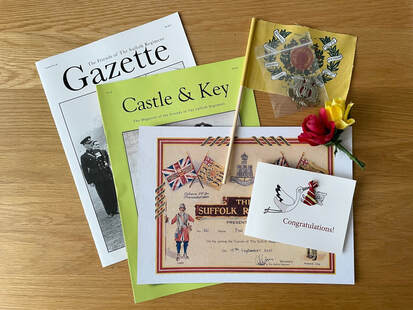
A membership form arrived today at Friends HQ from a our youngest ever member; nine day old Paul.
His dad, who has been a keen and very local member for some years now, has enlisted the next generation of his family into the ranks of the Suffolk Regiment. Young Paul can trace his regimental lineage back to Corporal Stanley Staden, MM, who was killed in France a week before the Armistice in 1918 whilst serving with the 11th Battalion (The 'Cambs-Suffolks'), and young Paul will carry 'Staden' as one of his middle names.
Well. we're a little taken aback by young Paul and his eagerness to join our ranks and so we felt that as a minimum, he deserved a joining certificate and a few 'goodies' for signing up (including a pair of Minden Roses and a Suffolk cap badge) and today we've posted these off to him.
Were delighted to welcome him along into our ranks and we hear that both he and his mummy are doing fine. Maybe in a few years time, he may wish to come onboard and help out with our magazines, until then "Speed the Pushchair!"
(Posted: 05.10.2021)
His dad, who has been a keen and very local member for some years now, has enlisted the next generation of his family into the ranks of the Suffolk Regiment. Young Paul can trace his regimental lineage back to Corporal Stanley Staden, MM, who was killed in France a week before the Armistice in 1918 whilst serving with the 11th Battalion (The 'Cambs-Suffolks'), and young Paul will carry 'Staden' as one of his middle names.
Well. we're a little taken aback by young Paul and his eagerness to join our ranks and so we felt that as a minimum, he deserved a joining certificate and a few 'goodies' for signing up (including a pair of Minden Roses and a Suffolk cap badge) and today we've posted these off to him.
Were delighted to welcome him along into our ranks and we hear that both he and his mummy are doing fine. Maybe in a few years time, he may wish to come onboard and help out with our magazines, until then "Speed the Pushchair!"
(Posted: 05.10.2021)
Major F.A. Godfrey: Senior Lecturer, RMA Sandhurst
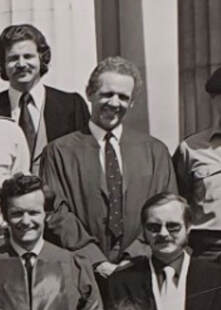
Today on Twitter, we spotted the image left, of Major F.A. 'Bob' Godfrey, MC, formerly of 1 Suffolk who was later senior lecturer in war studies and international affairs.
Bob Godfrey, who won his Military Cross wit the 1st Battalion in Malaya, was a man of many talents. He spoke at least five languages and was well verse in international affairs. Before accepting a position at Sandhurst, he has worked for the University of East Anglia at Norwich and before this for NATO in Olso.
The photograph was taken in 1975 and included a whole host of military history celebrities including the late Professor Richard Holmes (famous for his TV series 'War Walks'), and Anthony Brett-James (who wrote the history of the 5th (Indian) Division, of which 2nd Suffolk were part in 1943-44) clearly Bob was not a man to be swept along by the fashions of the day. He had chosen perhaps wisely, not to grow his hair excessively long, nor invest in a kipper tie - a wise choice we think!
Posted: 04.09.2021
Bob Godfrey, who won his Military Cross wit the 1st Battalion in Malaya, was a man of many talents. He spoke at least five languages and was well verse in international affairs. Before accepting a position at Sandhurst, he has worked for the University of East Anglia at Norwich and before this for NATO in Olso.
The photograph was taken in 1975 and included a whole host of military history celebrities including the late Professor Richard Holmes (famous for his TV series 'War Walks'), and Anthony Brett-James (who wrote the history of the 5th (Indian) Division, of which 2nd Suffolk were part in 1943-44) clearly Bob was not a man to be swept along by the fashions of the day. He had chosen perhaps wisely, not to grow his hair excessively long, nor invest in a kipper tie - a wise choice we think!
Posted: 04.09.2021
The Last Of The Auxiliaries...
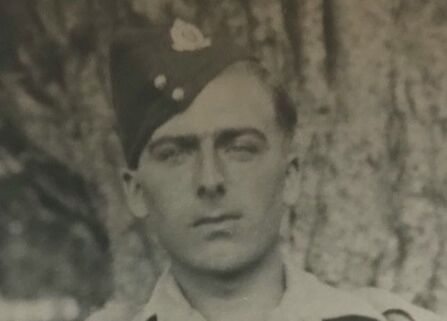
Today we saw in the online edition of the Daily Telegraph that one of, if not the last, of the Suffolk Home Guard Auxiliaries has passed away. Ivan Mower, who had sadly broken his leg and had to be admitted to hospital, passed away on 27th April. He was 97.
Along with his father, Ivan was a member of the Stradbroke Patrol in central Suffolk and his task was to be the most dangerous should a German invasion come. The role of the Auxiliaries were to stay behind and cause havoc for the invaders behind their own lines. As part of a nine-man team that included his father, Ivan, who was a local shepherd, had an underground bunker and enough arms and explosives to lye low for some days until the invasion took hold, before they could sabotage the enemy.
In the photograph above, Ivan can be seen in an FS cap and khaki aertex shirt. Research indicates that Ivan was called up in 1943 after the initial invasion scare had passed and joined the Suffolk Regiment. Both he and fellow auxiliary Walter Marjoram joined 2nd Suffolk at the very end of their service in India in 1944. His passing draws to our attention that members of the Suffolk Home Guard must have all but passed into history, except any particularly young members like Ivan who joined the Home Guard due to their being in a reserved occupation such as farming.
Image courtesy of the Daily Telegraph.
Posted: 25.08.2021
Along with his father, Ivan was a member of the Stradbroke Patrol in central Suffolk and his task was to be the most dangerous should a German invasion come. The role of the Auxiliaries were to stay behind and cause havoc for the invaders behind their own lines. As part of a nine-man team that included his father, Ivan, who was a local shepherd, had an underground bunker and enough arms and explosives to lye low for some days until the invasion took hold, before they could sabotage the enemy.
In the photograph above, Ivan can be seen in an FS cap and khaki aertex shirt. Research indicates that Ivan was called up in 1943 after the initial invasion scare had passed and joined the Suffolk Regiment. Both he and fellow auxiliary Walter Marjoram joined 2nd Suffolk at the very end of their service in India in 1944. His passing draws to our attention that members of the Suffolk Home Guard must have all but passed into history, except any particularly young members like Ivan who joined the Home Guard due to their being in a reserved occupation such as farming.
Image courtesy of the Daily Telegraph.
Posted: 25.08.2021
A Personal Souvenir
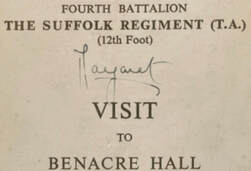
Recently, a very personal regimental souvenir was sold at action - a signed copy of the programme for the visit of H.R.H. The Princess Margaret to review the ranks of the 4th Battalion at Benacre Hall in June 1958.
The Princess, who was Colonel-in-Chief of the Suffolk Regiment, came to review the 4th Battalion. She had not until then inspected their ranks, having only visited the regular 1st Battalion (both in Germany and at Colchester).
The Adjutant of the 4th Battalion at that time was Major Johnnie Fisher-Hock, who had been commissioned into the Regiment in 1939 and had already served in Greece, Malaya and Germany with the 1st Battalion, before being posted to the 4th Battalion, and this was his copy.
On the back written in pencil, it was annotated: "Graciously signed by Her Royal Highness The Princess Margaret on the 8th June 1958, C.V.J. Fisher-Hock." Tangible regimental links to Princess Margaret are rare, so we hope this rare survivor has found a good home.
(Posted: 06/08/2021)
The Princess, who was Colonel-in-Chief of the Suffolk Regiment, came to review the 4th Battalion. She had not until then inspected their ranks, having only visited the regular 1st Battalion (both in Germany and at Colchester).
The Adjutant of the 4th Battalion at that time was Major Johnnie Fisher-Hock, who had been commissioned into the Regiment in 1939 and had already served in Greece, Malaya and Germany with the 1st Battalion, before being posted to the 4th Battalion, and this was his copy.
On the back written in pencil, it was annotated: "Graciously signed by Her Royal Highness The Princess Margaret on the 8th June 1958, C.V.J. Fisher-Hock." Tangible regimental links to Princess Margaret are rare, so we hope this rare survivor has found a good home.
(Posted: 06/08/2021)
Another Suffolk is Brought In From The Cold
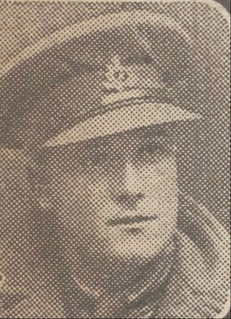
Today the Friends learnt of the unveiling of a Commonwealth War Graves headstone to a Suffolk officer of the Great War in a Cambridge cemetery.
Buried for many years in an unmarked grave, Nelson Suttle, who originally was a member of the Suffolk Yeomanry, but who was later commissioned and served with the 4th Battalion on the Somme, was badly wounded during their attack on High Wood in August 1916, and was invalided home. He died of influenza in November 1918, just a few days before the end of the War and until now, his final resting placed was unmarked.
Due to the work of the late Ray Young's who ran the excellent 'Suffolk Soldiers' website, and the 'Friends of Histon Road Cemetery', Nelson now has an official headstone and is finally commemorated. Another Suffolk soldier has been brought in from the cold.
A full article on this story and Suttle's career with 4th Suffolk, will be published in the next edition of the Castle & Key.
(Posted: 03/08/2021)
Buried for many years in an unmarked grave, Nelson Suttle, who originally was a member of the Suffolk Yeomanry, but who was later commissioned and served with the 4th Battalion on the Somme, was badly wounded during their attack on High Wood in August 1916, and was invalided home. He died of influenza in November 1918, just a few days before the end of the War and until now, his final resting placed was unmarked.
Due to the work of the late Ray Young's who ran the excellent 'Suffolk Soldiers' website, and the 'Friends of Histon Road Cemetery', Nelson now has an official headstone and is finally commemorated. Another Suffolk soldier has been brought in from the cold.
A full article on this story and Suttle's career with 4th Suffolk, will be published in the next edition of the Castle & Key.
(Posted: 03/08/2021)
Minden Day Returns Once Again
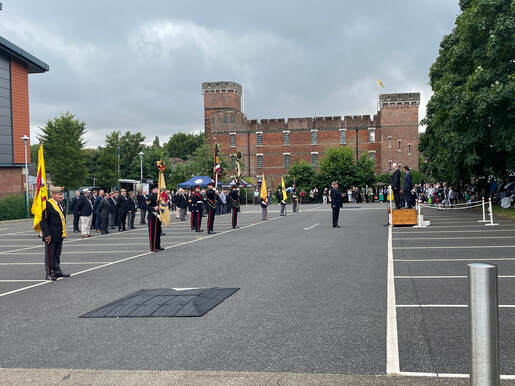
On Sunday 1st August under drizzle-laden skies, Minden Day; the Suffolk Regiment's celebration of its principal Battle Honour from 1759, was once again held at Gibraltar Barracks at Bury St. Edmunds.
After a lapse of a year, it was good to see many old comrades venturing back to their former Depot to meet one another again and relieve old campaigns. Though many had perhaps wisely, decided to stay away, we hope that by next August, we may all be able to meet one another again and celebrate the day as in days gone by.
Our thanks go out to the new team of organisers who made the day go smoothly and the Friends were delighted to share a tent with the Regimental Museum's shop. Here's to 2022 when we hope you will all be back there with us again!
(Posted: 01/08/2021)
After a lapse of a year, it was good to see many old comrades venturing back to their former Depot to meet one another again and relieve old campaigns. Though many had perhaps wisely, decided to stay away, we hope that by next August, we may all be able to meet one another again and celebrate the day as in days gone by.
Our thanks go out to the new team of organisers who made the day go smoothly and the Friends were delighted to share a tent with the Regimental Museum's shop. Here's to 2022 when we hope you will all be back there with us again!
(Posted: 01/08/2021)
IMPORTANT NEWS: Minden Day Will Go Ahead On 1 August
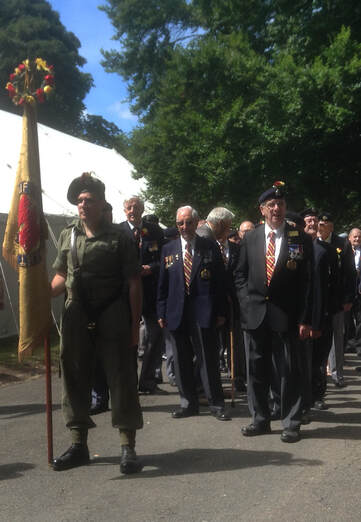
Finally after a lapse of a year, today we were forwarded an email from Brigadier Tony Calder, President of the Suffolk Regiment Association, informing all branches of the O.C.A., that Minden Day is going ahead as usual this year.
The Brigadier writes as follows:“I am pleased to tell you that it will go ahead, unless in the unlikely event that the lockdown rules are reimposed on 19th July. If the current rules remain the same or are relaxed then the event will go ahead. We have received assurances from the local Public Health authorities that it can go ahead with the current rules as it is an outdoor event. In that case there will need to be caution when parading and in the church tent to ensure social distancing, but you will be advised of this as necessary. However the likelihood is that the rules will be relaxed so that you can enjoy yourselves. So please pass on the message that Minden Day is on again.”
Therefore assuming all goes well, we look forward to seeing you all at Gibraltar Barracks, Bury St. Edmunds on Sunday 1st August 2021. The day’s proceedings will be as per previous years, commencing with a Church Parade at 11.00am, followed by the March Past of the massed ranks of the Old Comrades Association at noon. In the afternoon, there should be displays of military vehicles, marching bands and the lots more.
The Friends will hopefully have our usual spot somewhere amongst the trees, so come along, say hello and collect the latest edition of the magazine - and don’t forget to bring your renewals with you!
All are welcome to attend and entry onto the site we assume, will be as before - via the Leisure Centre on Beetons Way, turning off the Newmarket Road at the junction near Glasswells (for your SatNav, the postcode is IP33 3RN).
We strongly suggest however, that you keep a watch on this website, where we will publish any further news as and when we receive it.
(Posted: 09/07/2021)
The Brigadier writes as follows:“I am pleased to tell you that it will go ahead, unless in the unlikely event that the lockdown rules are reimposed on 19th July. If the current rules remain the same or are relaxed then the event will go ahead. We have received assurances from the local Public Health authorities that it can go ahead with the current rules as it is an outdoor event. In that case there will need to be caution when parading and in the church tent to ensure social distancing, but you will be advised of this as necessary. However the likelihood is that the rules will be relaxed so that you can enjoy yourselves. So please pass on the message that Minden Day is on again.”
Therefore assuming all goes well, we look forward to seeing you all at Gibraltar Barracks, Bury St. Edmunds on Sunday 1st August 2021. The day’s proceedings will be as per previous years, commencing with a Church Parade at 11.00am, followed by the March Past of the massed ranks of the Old Comrades Association at noon. In the afternoon, there should be displays of military vehicles, marching bands and the lots more.
The Friends will hopefully have our usual spot somewhere amongst the trees, so come along, say hello and collect the latest edition of the magazine - and don’t forget to bring your renewals with you!
All are welcome to attend and entry onto the site we assume, will be as before - via the Leisure Centre on Beetons Way, turning off the Newmarket Road at the junction near Glasswells (for your SatNav, the postcode is IP33 3RN).
We strongly suggest however, that you keep a watch on this website, where we will publish any further news as and when we receive it.
(Posted: 09/07/2021)
Victoria Cross Awarded To The 'Hero Of Manipur' Fetches £420,000
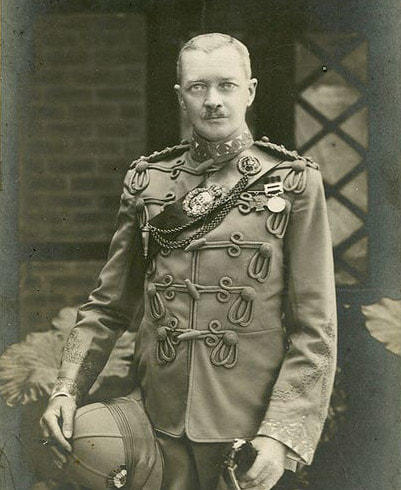
Recently at auction, a Victoria Cross won by Lieutenant Charles Grant, was sold for £420,000.
Grant, who started his career in the 12th Regiment, in May 1882, later won his Victoria Cross whilst serving with the 12th Regiment (2nd Burma Battalion) Madras Infantry in the Anglo-Manipur War in 1891.
Born in Bourtie, Aberdeenshire in 1861, his father was a Lieutenant-General and after passing out of the Royal Military College, Sandhurst, he was commissioned Lieutenant in the Suffolk Regiment on May 10 1882. Later he joined the Madras Staff Corps in 1884. After rising to Colonel, he retired after the Great War and moved to Sidmouth in Devon, where he died in 1932.
The auction house Dix Noonan and Webb who sold his medals (incidentally, they also sold Sidney Day's VC some years back) said that the buyer was “a relatively new collector of British Gallantry Awards”.
The month-long conflict between the British Empire and the Kingdom of Manipur – on the North East Frontier of India – saw Grant earn the nickname the “Hero of Manipur” for his bravery, but its pleasing to note that he was schooled in the 'Old Dozen' before he won his award for valour.
(Posted: 23/06/2021)
Grant, who started his career in the 12th Regiment, in May 1882, later won his Victoria Cross whilst serving with the 12th Regiment (2nd Burma Battalion) Madras Infantry in the Anglo-Manipur War in 1891.
Born in Bourtie, Aberdeenshire in 1861, his father was a Lieutenant-General and after passing out of the Royal Military College, Sandhurst, he was commissioned Lieutenant in the Suffolk Regiment on May 10 1882. Later he joined the Madras Staff Corps in 1884. After rising to Colonel, he retired after the Great War and moved to Sidmouth in Devon, where he died in 1932.
The auction house Dix Noonan and Webb who sold his medals (incidentally, they also sold Sidney Day's VC some years back) said that the buyer was “a relatively new collector of British Gallantry Awards”.
The month-long conflict between the British Empire and the Kingdom of Manipur – on the North East Frontier of India – saw Grant earn the nickname the “Hero of Manipur” for his bravery, but its pleasing to note that he was schooled in the 'Old Dozen' before he won his award for valour.
(Posted: 23/06/2021)
Reorganisation At Moyses Hall
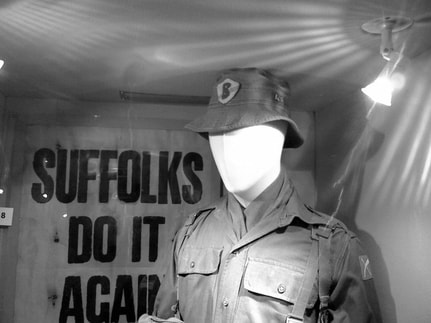
We have been forwarded an email sent by Brigadier Calder, President of the Suffolk Regiment Association, to all branches of the Old Comrades Association informing them that soon the Regimental Gallery in Moyses Hall Museum in Bury St. Edmunds, will be closed and relocated to another room within the building.
In his email, the Brigadier writes: “The Trustees were asked last month by the staff of Moyse’s Hall to move our exhibition out of the room that it currently occupies. This is because recent structural problems in the building mean that Moyse’s Hall main exhibition ‘Crime and Punishment’ can no longer remain there. The only other room is the Suffolk Regiment room. However, we have been offered another room, which is slightly smaller. The Trustees have accepted that we shall need to move out of our current site by the end of November and we are currently looking at how we shall represent the Suffolk Regiment at Moyse’s Hall in the future. Regrettably it is not a simple matter of moving from one room to another.”
We intend to visit Moyses Hall imminently to ascertain the situation and what the future will be for the Regimental Gallery. We will keep you all informed of developments should we receive any more more information.
(Posted: 06/06/2021)
In his email, the Brigadier writes: “The Trustees were asked last month by the staff of Moyse’s Hall to move our exhibition out of the room that it currently occupies. This is because recent structural problems in the building mean that Moyse’s Hall main exhibition ‘Crime and Punishment’ can no longer remain there. The only other room is the Suffolk Regiment room. However, we have been offered another room, which is slightly smaller. The Trustees have accepted that we shall need to move out of our current site by the end of November and we are currently looking at how we shall represent the Suffolk Regiment at Moyse’s Hall in the future. Regrettably it is not a simple matter of moving from one room to another.”
We intend to visit Moyses Hall imminently to ascertain the situation and what the future will be for the Regimental Gallery. We will keep you all informed of developments should we receive any more more information.
(Posted: 06/06/2021)
"The Nutters"
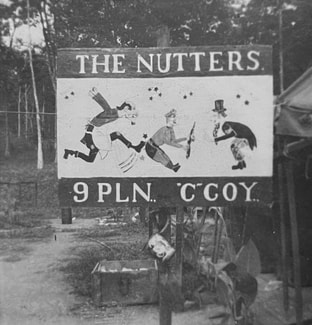
It's been good in recent weeks, to be able to get back out and visit a few old comrades and check that they are well. A recent visit to Felixstowe found us spending a few hours with a 1/Suffolk Malaya veteran who served in 9 Platoon, 'C' Company a.k.a. "The Nutters."
On a delightful evening we were privileged to see some photographs of his time there including the hitherto unknown 'second generation' Nutters sign. We knew the first sign became worn out after two years of use and that it was a small sign painted on the side of an old ration crate, but to find a photograph of the replacement sign (seen here) was great.
We hope to run an article with a few more of his photographs from his Malaya album in the next edition of the Gazette.
(Posted: 01/06/2021)
On a delightful evening we were privileged to see some photographs of his time there including the hitherto unknown 'second generation' Nutters sign. We knew the first sign became worn out after two years of use and that it was a small sign painted on the side of an old ration crate, but to find a photograph of the replacement sign (seen here) was great.
We hope to run an article with a few more of his photographs from his Malaya album in the next edition of the Gazette.
(Posted: 01/06/2021)
Major Ken Mayhew M.W.O., 1917-2021
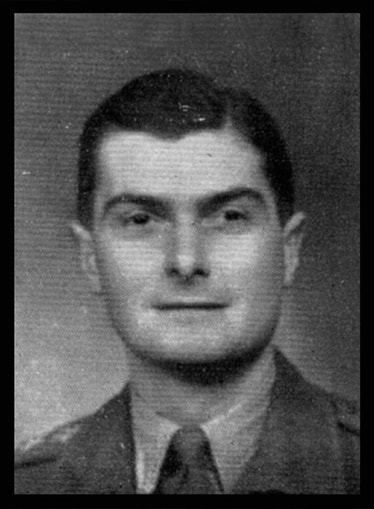
This afternoon we received the sad news that Major Ken Mayhew, the last known surviving officer to serve with 1 Suffolk in NW Europe, has passed away peacefully aged 104.
Born in 1917 and educated at Framingham College, Ken was commissioned into the Suffolk Regiment in May 1940. On D-Day, he commanded the Carrier Platoon and served with them through into Holland when he took over command of ‘D’ Company following the wounding of Major Claxton.
On 16 August 1944, Ken earned himself the title of the “Liberator of Flers” when with just two carriers, he was part of the first Allied troops to enter the town. Credit was later given to the 79th Armoured Division, but Ken was always quietly pleased that he had “captured a town ahead of the BBC!” (the BBC having a habit of announcing that certain towns were soon to be taken).
Ken was wounded twice during the campaign. First at Venraij in October 1944, when he went out to try and rescue the Battalion Commander, Lieutenant-Colonel R.W. Craddock who had trod on a schu-mine and lay helpless in a minefield under heavy enemy fire with his foot blown off, and secondly, when he was hit by shards of a mortar bomb when his Company attacked the hamlet of Sophienhof near the town of Goch in February 1945.
Determined not to leave the Battalion, after his first wound, he discharged himself from hospital and found his way back to 1 Suffolk in Holland, but in just a few days, his wound had become infected and he had to spent a period of days in a house in Helmond on a penicillin drip.
His second wound was serious enough to have him evacuated back to the UK, but after recuperation, Ken was posted to the 31st Battalion at Gibraltar with whom he remained until he was released in 1946. That year too, he was awarded the Militaire Willems-Orde; the Netherlands equivalent of the Victoria Cross. Whilst his citation for the award noted his gallantry in the battles at Overloon and Venraij, it was in all respects, for all his service since D-Day. It concluded by noting that “His very tall figure, proceeding unconcernedly from man to man under most dangerous conditions in action have won for him a place of admiration and respect achieved by few in the campaign in North West Europe.”
In civilian life Ken worked first for Fison’s, before setting up on his own running a highly successful grain and transport business. He never lost touch with the Regiment and attended virtually every Regimental Pilgrimage to Normandy and to Holland since they started in 1984. He remained active throughout his life and only stopped playing golf just short of his 100th birthday, not because he couldn’t walk the course, but because he couldn’t carry his clubs!
Ken’s passing reminds us that he was one of the last survivors of the NW Europe campaign and that another chapter of regimental history is now rapidly fading into history. Ken was an officer and a gentleman who always played down his actions during the war, though as someone once said of him ‘his life was the stuff of a Hollywood movie.’
Our thoughts are with his widow Trish, and his family at this time.
Mark Forsdike
(Posted: 14/05/2021)
With most grateful thanks to @EUCWBramford via Twitter for the image of Ken from the Fisons Journal of July 1944.
Born in 1917 and educated at Framingham College, Ken was commissioned into the Suffolk Regiment in May 1940. On D-Day, he commanded the Carrier Platoon and served with them through into Holland when he took over command of ‘D’ Company following the wounding of Major Claxton.
On 16 August 1944, Ken earned himself the title of the “Liberator of Flers” when with just two carriers, he was part of the first Allied troops to enter the town. Credit was later given to the 79th Armoured Division, but Ken was always quietly pleased that he had “captured a town ahead of the BBC!” (the BBC having a habit of announcing that certain towns were soon to be taken).
Ken was wounded twice during the campaign. First at Venraij in October 1944, when he went out to try and rescue the Battalion Commander, Lieutenant-Colonel R.W. Craddock who had trod on a schu-mine and lay helpless in a minefield under heavy enemy fire with his foot blown off, and secondly, when he was hit by shards of a mortar bomb when his Company attacked the hamlet of Sophienhof near the town of Goch in February 1945.
Determined not to leave the Battalion, after his first wound, he discharged himself from hospital and found his way back to 1 Suffolk in Holland, but in just a few days, his wound had become infected and he had to spent a period of days in a house in Helmond on a penicillin drip.
His second wound was serious enough to have him evacuated back to the UK, but after recuperation, Ken was posted to the 31st Battalion at Gibraltar with whom he remained until he was released in 1946. That year too, he was awarded the Militaire Willems-Orde; the Netherlands equivalent of the Victoria Cross. Whilst his citation for the award noted his gallantry in the battles at Overloon and Venraij, it was in all respects, for all his service since D-Day. It concluded by noting that “His very tall figure, proceeding unconcernedly from man to man under most dangerous conditions in action have won for him a place of admiration and respect achieved by few in the campaign in North West Europe.”
In civilian life Ken worked first for Fison’s, before setting up on his own running a highly successful grain and transport business. He never lost touch with the Regiment and attended virtually every Regimental Pilgrimage to Normandy and to Holland since they started in 1984. He remained active throughout his life and only stopped playing golf just short of his 100th birthday, not because he couldn’t walk the course, but because he couldn’t carry his clubs!
Ken’s passing reminds us that he was one of the last survivors of the NW Europe campaign and that another chapter of regimental history is now rapidly fading into history. Ken was an officer and a gentleman who always played down his actions during the war, though as someone once said of him ‘his life was the stuff of a Hollywood movie.’
Our thoughts are with his widow Trish, and his family at this time.
Mark Forsdike
(Posted: 14/05/2021)
With most grateful thanks to @EUCWBramford via Twitter for the image of Ken from the Fisons Journal of July 1944.
Above: Minden Day 2016. Ken and fellow 1 Suffolk veteran, Cecil Deller at a celebration lunch with members of 'Les Amis du Suffolk Regiment' who travelled to Bury St. Edmunds from Normandy, for the occasion. Cecil is now one of the last surviving members of the Battalion to have fought in NW Europe (1944-45).
R.Q.M.S. 'Wilf' Goddard 1918-2021

Yesterday evening, we received the sad news that Friend R.Q.M.S. Wilf Goddard had passed away peacefully at the grand old age of 103.
Born in Leiston on 21st February 1918, No. 5928219, Wilfred Arthur Goddard enlisted into 4th Suffolk on 26 April 1939 and was taken prisoner at Singapore on 15th February 1942. After his release and recuperation, unlike many of his fellow comrades, he chose to remain in the Territorial Army, rising to become R.Q.M.S. in 1958.
A stalwart of ‘C’ (Leiston, Southwold and Beccles) Company of 4th Suffolk in the post-war years, he was a crack shot in small bore rifles winning numerous medals and cups. He was also a keen athlete, participating two years running in the gruelling ‘Nijmegen March’ in Holland with a detachment of men from Leiston. Later when 4th Suffolk was disbanded, he continued to serve in the newly created ‘Suffolk and Cambridgeshire Regiment’ until 1967.
Wilf remained active all his life and was still walking into Leiston daily until just a few months ago when he had a fall and had to be ‘forced’ into a care home. A founder member of the Leiston Branch of the Old Comrades Association, his passing reminds us that now we have all but a couple of Far East Prisoners of War still left with us.
Our thoughts are with his family at this time.
(Posted: 11/05/2021)
Born in Leiston on 21st February 1918, No. 5928219, Wilfred Arthur Goddard enlisted into 4th Suffolk on 26 April 1939 and was taken prisoner at Singapore on 15th February 1942. After his release and recuperation, unlike many of his fellow comrades, he chose to remain in the Territorial Army, rising to become R.Q.M.S. in 1958.
A stalwart of ‘C’ (Leiston, Southwold and Beccles) Company of 4th Suffolk in the post-war years, he was a crack shot in small bore rifles winning numerous medals and cups. He was also a keen athlete, participating two years running in the gruelling ‘Nijmegen March’ in Holland with a detachment of men from Leiston. Later when 4th Suffolk was disbanded, he continued to serve in the newly created ‘Suffolk and Cambridgeshire Regiment’ until 1967.
Wilf remained active all his life and was still walking into Leiston daily until just a few months ago when he had a fall and had to be ‘forced’ into a care home. A founder member of the Leiston Branch of the Old Comrades Association, his passing reminds us that now we have all but a couple of Far East Prisoners of War still left with us.
Our thoughts are with his family at this time.
(Posted: 11/05/2021)
Remembering Christmas Webb
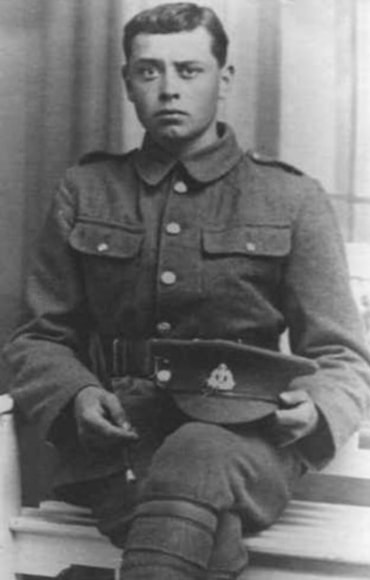
There were many men who served in the Suffolk Regiment with curious and unusual names. Valentine Russell, Octavius Kettle, Plantagenet White - all these names had meanings to the parents of these men and signified their birth dates, their ranking with their siblings, or their proud family heritage, but recently we found perhaps the most fascinating name of all: Christmas Webb.
In receiving the latest edition of the Suffolk Branch of the Western Front Association's newsletter via email, we came across an article written by Friends member, Kelvin Dakin, in which he records the life of No. 15652, Private Christmas Dick Webb of 7th Suffolk who died of wounds on 22 April 1916 and who is buried in St. Sever cemetery, Rouen.
As you would imagine, his first name was given to him because of his birthday, being born of Christmas Day 1894, in Witnesham, near Ipswich. He enlisted in Ipswich and served first in the 9th Battalion, before being wounded on 27 February 1916 and after recuperating, he was sent to the 7th Battalion, where he died most probably from wounds received in the front line in March/April 1916.
Christmas is seen here in his new khaki uniform in a photograph most probably taken in the Spring of 1915. He carries under his right arm, a walking out stick, the tip of which is just visible.
So, we think here that Christmas has by far taken the prize for having the most fantastic name, though one would argue that Captain Minden Francis Badcock of 2/5th Gloucestershire Regiment, killed at Pozieres in 1918 is a close second - did his family have a connection to the Suffolk Regiment, naming him after our principal Battle Honour?
With grateful thanks to Kelvin and Suffolk WFA for this information.
(Posted: 22/04/2021)
In receiving the latest edition of the Suffolk Branch of the Western Front Association's newsletter via email, we came across an article written by Friends member, Kelvin Dakin, in which he records the life of No. 15652, Private Christmas Dick Webb of 7th Suffolk who died of wounds on 22 April 1916 and who is buried in St. Sever cemetery, Rouen.
As you would imagine, his first name was given to him because of his birthday, being born of Christmas Day 1894, in Witnesham, near Ipswich. He enlisted in Ipswich and served first in the 9th Battalion, before being wounded on 27 February 1916 and after recuperating, he was sent to the 7th Battalion, where he died most probably from wounds received in the front line in March/April 1916.
Christmas is seen here in his new khaki uniform in a photograph most probably taken in the Spring of 1915. He carries under his right arm, a walking out stick, the tip of which is just visible.
So, we think here that Christmas has by far taken the prize for having the most fantastic name, though one would argue that Captain Minden Francis Badcock of 2/5th Gloucestershire Regiment, killed at Pozieres in 1918 is a close second - did his family have a connection to the Suffolk Regiment, naming him after our principal Battle Honour?
With grateful thanks to Kelvin and Suffolk WFA for this information.
(Posted: 22/04/2021)
"Those Who Go Down To The Sea In Ships, Who Do Business On Great Waters"
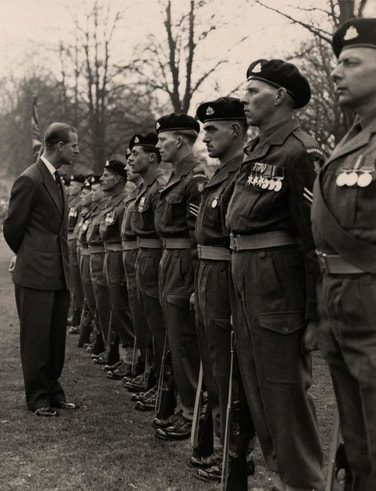
Today, the Nation, the Commonwealth and numerous countries around the world, stood in silence to remember the life of His Royal Highness, Prince Philip, Duke of Edinburgh.
As his funeral in St. Georges Chapel in Windsor, Her Majesty The Queen, together with her family, mourned the passing of a great man, who had done so much for our Armed Forces and the youth of this country and the Commonwealth.
The Duke of Edinburgh himself, had no link with the Suffolk Regiment, but on 1st May 1956, he visited Suffolk and was presented to a Guard of Honour of men from the 4th Battalion, the Suffolk Regiment at Christchurch Park, Ipswich, and the following day, he visited Lowestoft, where a second Guard of Honour of the Battalion was present.
Here in the line-up at Ipswich, the Duke can be seen talking to a young soldier of the Battalion who had served his National Service in Korea and who was then completing the remainder of his service with the T.A., but further back down the line, he stopped to talk to Sergeant Stimpson for some little time, having spotted that like himself, Stimpson wore the Burma Star, Stimpson having served in the 2nd Battalion since the mid-1930s in India.
As his funeral service drew to a close, the words of Psalm 107:23 were spoken; "Those who go down to the sea in ships, who do business on great waters, they see the works of the Lord, and His wonders in the deep" - a fitting epitaph for a sailor, statesman, and consort, who devoted his life to the service of his Queen and her Country.
May he rest in peace.
(Posted: 16.04.2021
As his funeral in St. Georges Chapel in Windsor, Her Majesty The Queen, together with her family, mourned the passing of a great man, who had done so much for our Armed Forces and the youth of this country and the Commonwealth.
The Duke of Edinburgh himself, had no link with the Suffolk Regiment, but on 1st May 1956, he visited Suffolk and was presented to a Guard of Honour of men from the 4th Battalion, the Suffolk Regiment at Christchurch Park, Ipswich, and the following day, he visited Lowestoft, where a second Guard of Honour of the Battalion was present.
Here in the line-up at Ipswich, the Duke can be seen talking to a young soldier of the Battalion who had served his National Service in Korea and who was then completing the remainder of his service with the T.A., but further back down the line, he stopped to talk to Sergeant Stimpson for some little time, having spotted that like himself, Stimpson wore the Burma Star, Stimpson having served in the 2nd Battalion since the mid-1930s in India.
As his funeral service drew to a close, the words of Psalm 107:23 were spoken; "Those who go down to the sea in ships, who do business on great waters, they see the works of the Lord, and His wonders in the deep" - a fitting epitaph for a sailor, statesman, and consort, who devoted his life to the service of his Queen and her Country.
May he rest in peace.
(Posted: 16.04.2021
A Kitchener Drummer
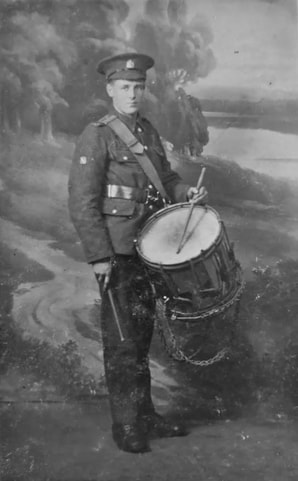
For those of you who are members of the Friends, you will know that here at Friends HQ, were like Regimental Drums.
Photographs of individual Suffolk Regiment Drummers are quite difficult to obtain, but this week we have been sent an image of a man of Kitchener's Army, taken most likely when he received his first set of khaki uniform.
This Drummer wears the simplified service dress jacket, as commonly seen being worn by men of the New Armies until supplies of the regular pattern of service dress jacket could be made in sufficient numbers. On his right sleeve can be seen the small brass drummers badge - a similar badge was also worn on the other arm in the same position. His trousers are pressed with no frontal pleats (as sign of late war and post-war drummers) and he wears a leather 1914 Pattern waist belt that went with a set of leather equipment, that was in the majority, issued to New Army men (as their comrades in the regular and territorial battalions had exhausted existing supplies of web equipment).
It would have been great to find an emblazon on the Drum, but alas it is blank - of policed brass, with standard red, white and blue painted hoops. We know that the 7th and 8th Battalion's had their own emblazons, but we have as yet, no data for the drums of 9th, 11th and 12th Battalions.
If you have any data onto Drums of these battalions the New Armies if the Regiment, please do get in contact with us.
(Posted: 12/04/2021)
Photographs of individual Suffolk Regiment Drummers are quite difficult to obtain, but this week we have been sent an image of a man of Kitchener's Army, taken most likely when he received his first set of khaki uniform.
This Drummer wears the simplified service dress jacket, as commonly seen being worn by men of the New Armies until supplies of the regular pattern of service dress jacket could be made in sufficient numbers. On his right sleeve can be seen the small brass drummers badge - a similar badge was also worn on the other arm in the same position. His trousers are pressed with no frontal pleats (as sign of late war and post-war drummers) and he wears a leather 1914 Pattern waist belt that went with a set of leather equipment, that was in the majority, issued to New Army men (as their comrades in the regular and territorial battalions had exhausted existing supplies of web equipment).
It would have been great to find an emblazon on the Drum, but alas it is blank - of policed brass, with standard red, white and blue painted hoops. We know that the 7th and 8th Battalion's had their own emblazons, but we have as yet, no data for the drums of 9th, 11th and 12th Battalions.
If you have any data onto Drums of these battalions the New Armies if the Regiment, please do get in contact with us.
(Posted: 12/04/2021)
A New Shirt - Palestine Negatives Come To Light
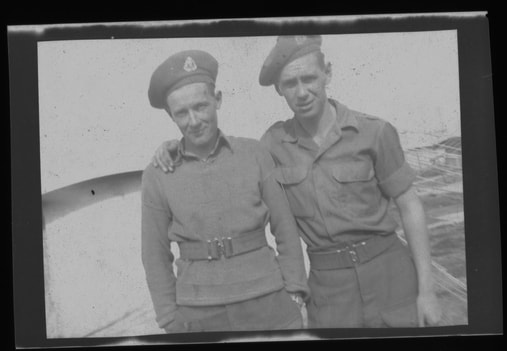
Do any of you recognise these two fine looking soldiers of the Suffolk Regiment taken in Egypt or Palestine in 1945-46?
The Friends were sent a couple of negatives this week of Suffolk soldiers take at that time and with the miracles of technology, we have been able to scp them and invert them.
These two men here appear to be veterans of the campaign in Europe during the war and the soldier on the right wears a US Army shirt that were issued to men of the Battalion in Belgium when they were training for a proposed moved to the Far East and the invasion of Japan, but before then, the Atom Bomb was dropped and they were never sent - but they all managed to keep their new shirts!!!
Any helpful suggestions as to who they are, would be greatly appreciated. Thanks.
(Posted: 05/04/2021)
The Friends were sent a couple of negatives this week of Suffolk soldiers take at that time and with the miracles of technology, we have been able to scp them and invert them.
These two men here appear to be veterans of the campaign in Europe during the war and the soldier on the right wears a US Army shirt that were issued to men of the Battalion in Belgium when they were training for a proposed moved to the Far East and the invasion of Japan, but before then, the Atom Bomb was dropped and they were never sent - but they all managed to keep their new shirts!!!
Any helpful suggestions as to who they are, would be greatly appreciated. Thanks.
(Posted: 05/04/2021)
Quartermaster Laver - Can you help?
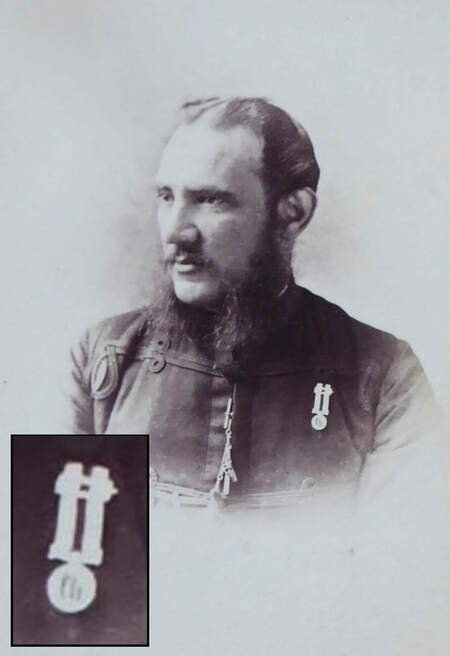
This week, we were lucky enough to procure this lovely Carte-de-Visite photograph of an officer of the Twelfth Regiment, taken in Preston in the early 1870s.
His long straggling mutton-chop side whiskers, were a throw back to service in New Zealand, and a upon comparison with a photograph of the officers of the Twelfth Regiment taken at Devonport between 1867-1870, he can be found marked as just as "QM."
However, a look at Colonel Webb's History of the Regiment (1685-1913) identifies the Quartermaster in New Zealand and "Laver" and to confirm the identity, the man appears to be wearing the same watch chain as intros photograph, in the Devonport photograph also.
What's puzzling us though, is his medal. What is it? The pattern of stripes looks right for the New Zealand Campaign Medal (1866), but its cross-bar hanger had a distinctive rounded corner, which does not appear to be seen on this example.
We've blown the photograph up and were still none the wiser, but if you think you know what it could be, please do get in contact with us.
Thank you.
(Posted: 30/03/2021)
His long straggling mutton-chop side whiskers, were a throw back to service in New Zealand, and a upon comparison with a photograph of the officers of the Twelfth Regiment taken at Devonport between 1867-1870, he can be found marked as just as "QM."
However, a look at Colonel Webb's History of the Regiment (1685-1913) identifies the Quartermaster in New Zealand and "Laver" and to confirm the identity, the man appears to be wearing the same watch chain as intros photograph, in the Devonport photograph also.
What's puzzling us though, is his medal. What is it? The pattern of stripes looks right for the New Zealand Campaign Medal (1866), but its cross-bar hanger had a distinctive rounded corner, which does not appear to be seen on this example.
We've blown the photograph up and were still none the wiser, but if you think you know what it could be, please do get in contact with us.
Thank you.
(Posted: 30/03/2021)
More Regimental Fakes

Recently, there have been a spate of fake Suffolk Regimental items being offered for sale. A Second World War era Wolseley sun helmet was offered for sale in the US with a red and yellow patch on the side that claimed to be a genuine Suffolk example, and more recently this week on eBay the below medal which purported to be an original Army Temperance Association example, award to an abstaining soldier of the 12th reached a three-figure sum.
The example - seen here, is a crude attempt to make sometime appear to be valuable, but is made from a series of different badges and brooches. It contains an early 'sweetheart' badge in brass - with a style of crown and castle associated with the Edwardian era, but on the obverse, are the letters 'ATA' crudely tacked on with pins. 'ATA' the seller noted stood for 'Army Temperance Association' - that noble body of soldiers who took the pledge not to drink, but it had been the Royal Army Temperance Association since 1902, yet the 'R' was missing.
For those with a knowledge of military collectibles, you will note a distinct similarity in the style of the letters with that of an Auxiliary Territorial Service (ATS) shoulder title of the Second World War period, and indeed as if to confirm our suspicions, that second 'A' has been broken away, at the point where the 'S' of an 'ATS' shoulder title would have been. The 'S' had been removed, and another 'A' from a second shoulder title tacked into its place.
It's sad to see this sort of thing happening as a new generation of unwitting collectors get fooled by such things. We have all be caught out. I brought a 1st Battalion drum some years ago, only to discover it was a 1960s fake, but sadly as interest in the Regiment grows, this will become an all too common experience to those who are unaware. As the old saying goes - "if in doubt, ask"
(Posted: 22/03/2021)
The example - seen here, is a crude attempt to make sometime appear to be valuable, but is made from a series of different badges and brooches. It contains an early 'sweetheart' badge in brass - with a style of crown and castle associated with the Edwardian era, but on the obverse, are the letters 'ATA' crudely tacked on with pins. 'ATA' the seller noted stood for 'Army Temperance Association' - that noble body of soldiers who took the pledge not to drink, but it had been the Royal Army Temperance Association since 1902, yet the 'R' was missing.
For those with a knowledge of military collectibles, you will note a distinct similarity in the style of the letters with that of an Auxiliary Territorial Service (ATS) shoulder title of the Second World War period, and indeed as if to confirm our suspicions, that second 'A' has been broken away, at the point where the 'S' of an 'ATS' shoulder title would have been. The 'S' had been removed, and another 'A' from a second shoulder title tacked into its place.
It's sad to see this sort of thing happening as a new generation of unwitting collectors get fooled by such things. We have all be caught out. I brought a 1st Battalion drum some years ago, only to discover it was a 1960s fake, but sadly as interest in the Regiment grows, this will become an all too common experience to those who are unaware. As the old saying goes - "if in doubt, ask"
(Posted: 22/03/2021)
By Royal Appointment
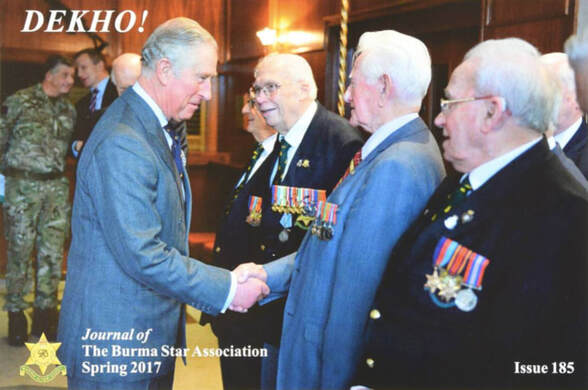
Very rarely have members of the Suffolk Regiment been attendees at Royal functions, but here seems to be one of those rare occasions.
Today's post brought a number of items relating to a 2nd Suffolk Regiment Burma veteran who has recently passed away. Inside were various bits of paperwork and copies of photographs of men who serviced in the Burma campaign, but included in the lot, was a copy of the Spring 2017 edition of 'Dekho!' - the magazine of the Burma Star Association, which shows a veteran of the campaign being introduced to H.R.H. The Print of Wales, wearing a distinctive Suffolk Regiment tie.
Further reading inside, identified this as Private Idris Jones, formerly of 2nd Suffolk, who served in the battles in the Arakan and later at Imphal. We met Idris many years ago at a BBQ held in Ipswich when he produced a battered copy of the article 'Men of the Arakan' where he pointed out to us his face in a photograph of a group of men having tea in the Arakan, just after the battle for the hilltop position known as 'Bamboo.' One can surmise as to what His Royal Highness is asking Mr Jones? Is he making polite conversation? or is he asking the obvious question: "tell me, to what Regiment does that hideous tie belong to?!"
(Posted: 18/03/2021)
Today's post brought a number of items relating to a 2nd Suffolk Regiment Burma veteran who has recently passed away. Inside were various bits of paperwork and copies of photographs of men who serviced in the Burma campaign, but included in the lot, was a copy of the Spring 2017 edition of 'Dekho!' - the magazine of the Burma Star Association, which shows a veteran of the campaign being introduced to H.R.H. The Print of Wales, wearing a distinctive Suffolk Regiment tie.
Further reading inside, identified this as Private Idris Jones, formerly of 2nd Suffolk, who served in the battles in the Arakan and later at Imphal. We met Idris many years ago at a BBQ held in Ipswich when he produced a battered copy of the article 'Men of the Arakan' where he pointed out to us his face in a photograph of a group of men having tea in the Arakan, just after the battle for the hilltop position known as 'Bamboo.' One can surmise as to what His Royal Highness is asking Mr Jones? Is he making polite conversation? or is he asking the obvious question: "tell me, to what Regiment does that hideous tie belong to?!"
(Posted: 18/03/2021)
Regimental Daffodils
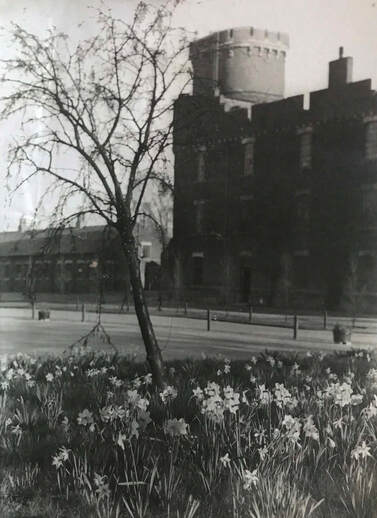
At the end of my garden, the daffodils are already coming into bloom. This can only mean one thing, that the same is probably happening at the Depot.
The old parkland at Gibraltar Barracks usually bursts into bloom around mid-late March but with the weather being at present, fine, they are probably bursting forth into riot of yellow across the old grassland around the Officers Mess, the Admin block and the Guard Room, or rather the areas where they used to be - since these were all demolished in the early 1960s.
The Keep (seen here) is the only building left of the old barrack site that was built in 1878, but from its opening as a training centre for the recruits of the Regiment, great measures were taken to keep its appearance smart.
The site when opened, included several tumuli and a curious area of pathway known as the 'Egg' which remained untouched throughout its lifetime. In the 1930s, great strides were made in the planting of several hundred daffodil bulbs that still to this day, bursts into bloom around this time of year and the annual 'Daffodil Sunday' opening of the Depot was a major event in the town.
Sadly this year, we can't celebrate this day with an opening of the Regimental Museum, but the woods are open to the public and if you live close, why not go and see for yourself how great the Regimental Daffodils are!
(Posted: 03/03/2021)
The old parkland at Gibraltar Barracks usually bursts into bloom around mid-late March but with the weather being at present, fine, they are probably bursting forth into riot of yellow across the old grassland around the Officers Mess, the Admin block and the Guard Room, or rather the areas where they used to be - since these were all demolished in the early 1960s.
The Keep (seen here) is the only building left of the old barrack site that was built in 1878, but from its opening as a training centre for the recruits of the Regiment, great measures were taken to keep its appearance smart.
The site when opened, included several tumuli and a curious area of pathway known as the 'Egg' which remained untouched throughout its lifetime. In the 1930s, great strides were made in the planting of several hundred daffodil bulbs that still to this day, bursts into bloom around this time of year and the annual 'Daffodil Sunday' opening of the Depot was a major event in the town.
Sadly this year, we can't celebrate this day with an opening of the Regimental Museum, but the woods are open to the public and if you live close, why not go and see for yourself how great the Regimental Daffodils are!
(Posted: 03/03/2021)
Robin Farmer OBE
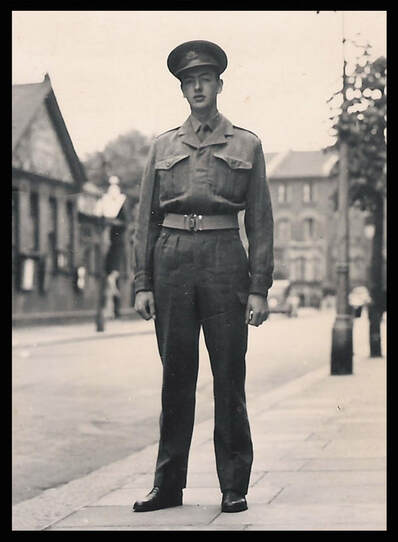
We've just received the sad news that Friend Robin Farmer, who served with 1 Suffolk in Malaya, 1952-53, has passed away. He went into a care home last year but sadly contracted COVID.
Robin was commissioned into 1/Suffolk in 1952 and commanded 12 Platoon, D Company - the same platoon his father had commanded in Salonika in 1918. Robin had a rich and colourful life. During the war his parents were interned in China (where his father had been working when the Japanese invaded) but Robin was luckily left at home. He was evacuated to Canada and narrowly avoided being sunk by a German submarine on the way. He returned to the UK in 1944 and stayed with friends in Suffolk, recalling that one night he had to give up his bedroom to the band leader Glenn Miller, who was performing at a local US airbase. After the war, he was reunited with his parents in Hong Kong.
Educated at Radley, after National Service he went up to Oxford and later had a long career with ICI travelling the world to numerous exotic locations and far-flung places, heading up various new ventures for them. He later settled in Cheshire and became a director of the Cheshire NHS trust for which he was awarded an OBE.
Robin was an enormously generous man and a great supporter of the Friends. He was always interested in anything related with his old Regiment and purchased several items of regimental interest and important medal groups that he donated to the Regimental Museum. Robin was incredibly well read and knew much of regimental history and whenever one visited, he would quiz them over various Regimental battles over a wide variety of malt whiskies.
An enormously likeable man. An officer and in every respect of the word, a gentleman. He will be greatly missed. A fuller obituary will be published in the next edition of the Castle & Key.
(Posted: 24/02/2021)
Robin was commissioned into 1/Suffolk in 1952 and commanded 12 Platoon, D Company - the same platoon his father had commanded in Salonika in 1918. Robin had a rich and colourful life. During the war his parents were interned in China (where his father had been working when the Japanese invaded) but Robin was luckily left at home. He was evacuated to Canada and narrowly avoided being sunk by a German submarine on the way. He returned to the UK in 1944 and stayed with friends in Suffolk, recalling that one night he had to give up his bedroom to the band leader Glenn Miller, who was performing at a local US airbase. After the war, he was reunited with his parents in Hong Kong.
Educated at Radley, after National Service he went up to Oxford and later had a long career with ICI travelling the world to numerous exotic locations and far-flung places, heading up various new ventures for them. He later settled in Cheshire and became a director of the Cheshire NHS trust for which he was awarded an OBE.
Robin was an enormously generous man and a great supporter of the Friends. He was always interested in anything related with his old Regiment and purchased several items of regimental interest and important medal groups that he donated to the Regimental Museum. Robin was incredibly well read and knew much of regimental history and whenever one visited, he would quiz them over various Regimental battles over a wide variety of malt whiskies.
An enormously likeable man. An officer and in every respect of the word, a gentleman. He will be greatly missed. A fuller obituary will be published in the next edition of the Castle & Key.
(Posted: 24/02/2021)
Brrr....
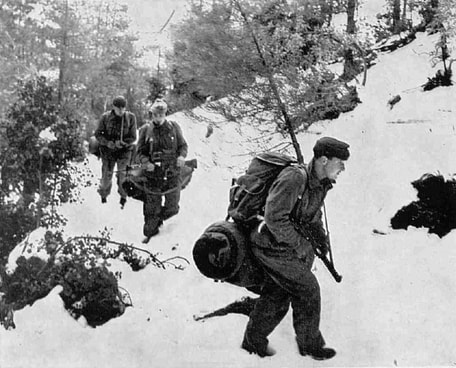
The last week has been ff..fff...fffreezing!
Cold weather and snow drifts across Suffolk that have not been seen in my lifetime, have forced many of us to stay inside - though some hardy souls (the Secretary armed with a tank suit and GS shovel) have continued to go to work.
However, when we all feel hard done by that we have to stay-in due to this short flutter of snow, remember those men of the Suffolk Regiment that have campaigned on active service in some of the coldest and remotest parts of the world.
From 2nd Suffolk over 7156ft up in the snow capped mountain range at Razmak in Northern India in 1939-40, to 1 Suffolk up in the Austrian Alps training in 1954, and more recently, 1 Suffolk again in the Troodos and Kyrenia Mountains of Cyprus, 1957-59.
In each of these actions, in addition to battling the elements, they were also battling very different types of enemies. From waring tribesman, to cold war armies, to terrorist freedom fighters. So stop moaning that you're cold - when our forefathers had nothing more that a woollen greatcoat and balaclava to keep them warm!
Seriously though, wrap up warm and stay safe.
(Posted: 10/02/2021)
Cold weather and snow drifts across Suffolk that have not been seen in my lifetime, have forced many of us to stay inside - though some hardy souls (the Secretary armed with a tank suit and GS shovel) have continued to go to work.
However, when we all feel hard done by that we have to stay-in due to this short flutter of snow, remember those men of the Suffolk Regiment that have campaigned on active service in some of the coldest and remotest parts of the world.
From 2nd Suffolk over 7156ft up in the snow capped mountain range at Razmak in Northern India in 1939-40, to 1 Suffolk up in the Austrian Alps training in 1954, and more recently, 1 Suffolk again in the Troodos and Kyrenia Mountains of Cyprus, 1957-59.
In each of these actions, in addition to battling the elements, they were also battling very different types of enemies. From waring tribesman, to cold war armies, to terrorist freedom fighters. So stop moaning that you're cold - when our forefathers had nothing more that a woollen greatcoat and balaclava to keep them warm!
Seriously though, wrap up warm and stay safe.
(Posted: 10/02/2021)
Wild Country..
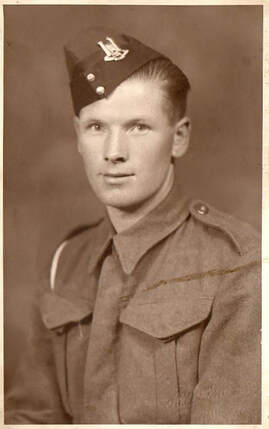
This week, we have been preparing the next edition of the Castle & Key and we have strayed into some rather wide country - that of the history of the Loyal Suffolk Hussars.
To be frank, its an area that we have somewhat neglected in the years we have been in existence, but we made a promise back in 2008 that we would include them as part of the family and with just two articles in thirteen years, we have done them an injustice. So preparing to right that wrong, we've started today on a short history of the 55th (Suffolk Yeomanry) Anti-Tank Regiment Royal Artillery, charting their war service as a gunner unit from D-Day to VE-Day.
It's actually been fascinating reading and some great research so far. They had a spectacular and glorious campaign in Normandy, fighting in support of the infantry around the villages of Rauray and Fontenay-le-Pesnel, but it is fair to say that after this, they had something of an inglorious war. Though they were always there, behind the infantry, they were never plunged into battle again experiencing the ferocity they had encountered in Normandy, though they acted as infantry in the cold winter of 1944-45 in Holland to release infantryman who were desperately needed on other areas. As with many units, their war 'fizzled out' in North Holland keeping routes open to allow food to be taken to the starving Dutch.
It won't be a long article as space does not permit it, but it may spawn others in our ranks to add to it in the future. A detailed account of their war service definitely deserves to be told (that is if anyone is prepared to write it!)
(Posted: 03/02/2021)
To be frank, its an area that we have somewhat neglected in the years we have been in existence, but we made a promise back in 2008 that we would include them as part of the family and with just two articles in thirteen years, we have done them an injustice. So preparing to right that wrong, we've started today on a short history of the 55th (Suffolk Yeomanry) Anti-Tank Regiment Royal Artillery, charting their war service as a gunner unit from D-Day to VE-Day.
It's actually been fascinating reading and some great research so far. They had a spectacular and glorious campaign in Normandy, fighting in support of the infantry around the villages of Rauray and Fontenay-le-Pesnel, but it is fair to say that after this, they had something of an inglorious war. Though they were always there, behind the infantry, they were never plunged into battle again experiencing the ferocity they had encountered in Normandy, though they acted as infantry in the cold winter of 1944-45 in Holland to release infantryman who were desperately needed on other areas. As with many units, their war 'fizzled out' in North Holland keeping routes open to allow food to be taken to the starving Dutch.
It won't be a long article as space does not permit it, but it may spawn others in our ranks to add to it in the future. A detailed account of their war service definitely deserves to be told (that is if anyone is prepared to write it!)
(Posted: 03/02/2021)
The Lesser-Spotted Colonel Arthur Campbell
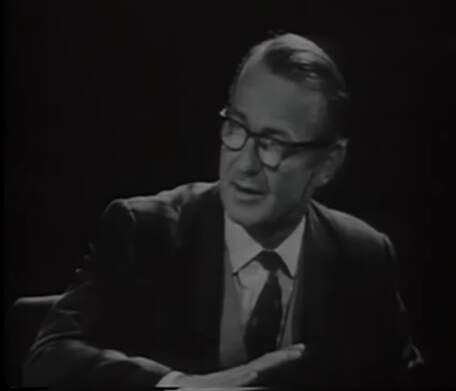
Recently, we stumbled across an old documentary about the British Army's role in post-war peacekeeping operations.
Made in 1967, the 'Peace Keepers' was presented by General Sir Brian Horrocks (who commanded XXX Corps in North West Europe during the war) and featured him discussing the numerous post-war campaigns with David Lilley.
In the four-part special on the Malayan Emergency, in the third episode, he mentioned the action of 2/Lieutenant Ray Hands and how he eliminated the communist terrorist leader Lieu Kon Kim, but what was truly remarkable (for us that is) is that it was Lieutenant-Colonel Arthur Campbell MC, who told Horrocks how it was done.
Campbell in his trademark horn-rimmed glasses, was something of a legend in the post-war history of the Suffolk Regiment. He should have commanded the 1st Battalion, and were it not for the fact that Lieutenant-Colonel W.S. Bevan had six month seniority over him, he would have done so. Many often said that he was such a brilliant leader that he would have ultimately become another 'Monty' He did finally command 1/1st East Anglian Regiment in Berlin and later in British Guiana, before retiring in 1963.
He is probably best known for his writing the semi-fictionalised account of campaigning in Malaya 'Jungle Green' which was an instant success when it was first published in 1953. It was great to finally hear Campbell speak, though it was a shame that he didn't wear a Regimental Tie!
(Posted: 15/01/2021)
Made in 1967, the 'Peace Keepers' was presented by General Sir Brian Horrocks (who commanded XXX Corps in North West Europe during the war) and featured him discussing the numerous post-war campaigns with David Lilley.
In the four-part special on the Malayan Emergency, in the third episode, he mentioned the action of 2/Lieutenant Ray Hands and how he eliminated the communist terrorist leader Lieu Kon Kim, but what was truly remarkable (for us that is) is that it was Lieutenant-Colonel Arthur Campbell MC, who told Horrocks how it was done.
Campbell in his trademark horn-rimmed glasses, was something of a legend in the post-war history of the Suffolk Regiment. He should have commanded the 1st Battalion, and were it not for the fact that Lieutenant-Colonel W.S. Bevan had six month seniority over him, he would have done so. Many often said that he was such a brilliant leader that he would have ultimately become another 'Monty' He did finally command 1/1st East Anglian Regiment in Berlin and later in British Guiana, before retiring in 1963.
He is probably best known for his writing the semi-fictionalised account of campaigning in Malaya 'Jungle Green' which was an instant success when it was first published in 1953. It was great to finally hear Campbell speak, though it was a shame that he didn't wear a Regimental Tie!
(Posted: 15/01/2021)
A Happy New Year To All Friends!
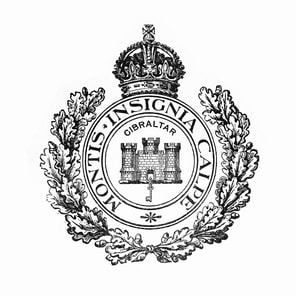
Welcome to another year of the Friends.
Back in 2008 when we started, little did we think that we'd still be here 13 years later. The last twelve months have been a tough time for us all. We've seen some of our older members pass away, but we have had many new members join us. Hopefully now, with a vaccine for COVID being rolled out, we can all look forward to a brighter 2021.
Hopefully this year, we can celebrate Minden Day again at Gibraltar Barracks, and remember the fallen of the Regiment on Remembrance Day. Though last year was a temporary, and emotionally painful setback, our remembrance of the Suffolk Regiment continues every day, so stick with us (or join us if you have never been a part of us!!!) and let's go forward into 2021 in confidence that the Suffolk Regiment is definitely not forgotten yet.
Here's to the first twelve years of remembering the 'Old Dozen' and here's to the next twelve!
(Posted: 01/01/2021)
Back in 2008 when we started, little did we think that we'd still be here 13 years later. The last twelve months have been a tough time for us all. We've seen some of our older members pass away, but we have had many new members join us. Hopefully now, with a vaccine for COVID being rolled out, we can all look forward to a brighter 2021.
Hopefully this year, we can celebrate Minden Day again at Gibraltar Barracks, and remember the fallen of the Regiment on Remembrance Day. Though last year was a temporary, and emotionally painful setback, our remembrance of the Suffolk Regiment continues every day, so stick with us (or join us if you have never been a part of us!!!) and let's go forward into 2021 in confidence that the Suffolk Regiment is definitely not forgotten yet.
Here's to the first twelve years of remembering the 'Old Dozen' and here's to the next twelve!
(Posted: 01/01/2021)
